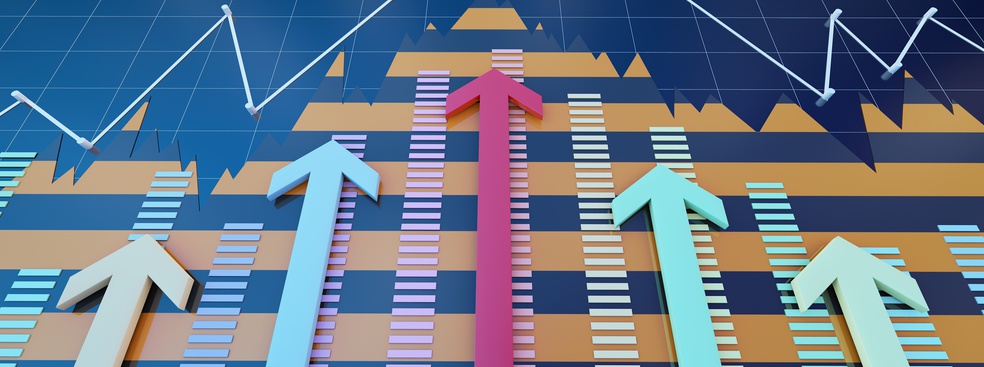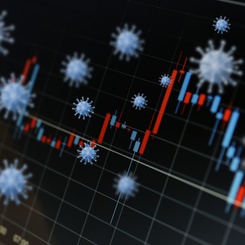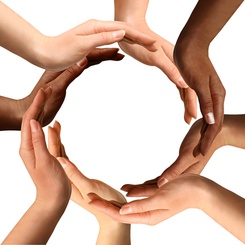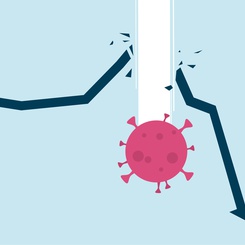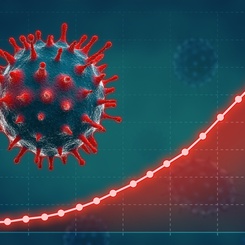On March 11th 2020, the World Health Organization (WHO) officially declared the Covid-19 outbreak a pandemic [1]. Covid-19 cases have, since then, been reported in more than 190 countries, spreading across the world without regard for national, political, religious and linguistic divides, affecting countries with different income per capita levels and varied health systems [2]. Only time will allow us to make a thorough assessment of the actual mortality rates, its correlates and the most efficient policy responses.
As of now, policy-makers and citizens are having to react to the health crisis, and, as Epictetus famously said, « It’s not what happens to you, but it’s how you react to it that matters ». How are we reacting to it? And who are those among us on the front line? When answering this question, the first image that comes to mind is that of the pandemic front line workers: the health care workers.
In a 2019 working paper of the WHO, the authors studied the gendered nature of the health and social sector [3]. In Europe, 84% of nurses are women, with similar numbers around the world. And while nurses are among the visible female front line workers, women are also in the front line in less “visible” ways. These visible and (in)visible contributions of women are not a novel fact. What may be novel is how the current “war”, as defined by President Emmanuel Macron, against Covid-19 is that it may be changing our recognition of these contributions.
Among healthcare workers, the contribution of female workers is undervalued. Indeed, the gender pay gap as of 2018 is no less than 28% and is higher than the global gender pay gap, which is close to 22%. Part of the gap results from a higher incidence of part-time work among women. A bigger percentage is explained by different occupational choices within the healthcare industry. Yet, an even bigger percentage is unexplained, partly the result of gender discrimination.
But women's contributions to society are not just undervalued because of distortions in the marketplace, they are also unrecognized because they often take place outside of the market altogether. Consider, for instance, that women are the main providers of household services, including caring for children and for the elderly [4]. Similarly, women are more likely to work in the informal sector, allowing them the flexibility to ensure their ”double shift” in the market place and in the domestic sphere.
Women’s contributions, yet, are not accounted for in GDP statistics. Indeed, the problem of leaving out household production and therefore part of women’s contribution to society is considered as a major flaw in GDP measurement [5].
Yet changing the measures that society and policy-makers use for defining economic prosperity is challenging. Part of it is due to the fact that alternative measures, while numerous, tend to propose multidimensional score boards, or address tackling one issue at a time, such as inequality or environmental externalities.
Further, a major challenge for changing the statistics we use to define prosperity comes from the fact that statistics are a social convention and changing them requires significant international cooperation. Indeed, the System of National Accounts, of which GDP is the most well-known concept, was adopted by the UN following the Second World War.
Maybe, then, now is the right time to collectively rethink how we measure prosperity. A time where policy makers around the world are focusing their attention on a single common threat, a time where citizens around the world become more conscious of the value of time, of our “own time” but also the time we give to others. This crisis is making the visible and (in)visible contributions of women to economic prosperity more salient. Let us use it as an opportunity not only to acknowledge them, but also to adapt our statistical tools to better measure them.
References
-
https://www.ft.com/coronavirus-latest
-
Boniol M, McIsaac M, Xu L, Wuliji T, Diallo K, Campbell J. Gender equity in the health workforce: analysis of 104 countries. Working paper 1. Geneva: World Health Organization; 2019 (WHO/HIS/HWF/Gender/WP1/2019.1).Licence: CC BY-NC-SA 3.0 IGO.
-
Hicks, D. L., Santacreu-Vasut E. and Shoham A. (2015) Does mother tongue make for women’s work? Linguistics, household labor, and gender identity, Journal of Economic Behavior & Organization 110, 19-44
-
The trouble with GDP- The Economist, April 30th 2016, pp 21-25.
